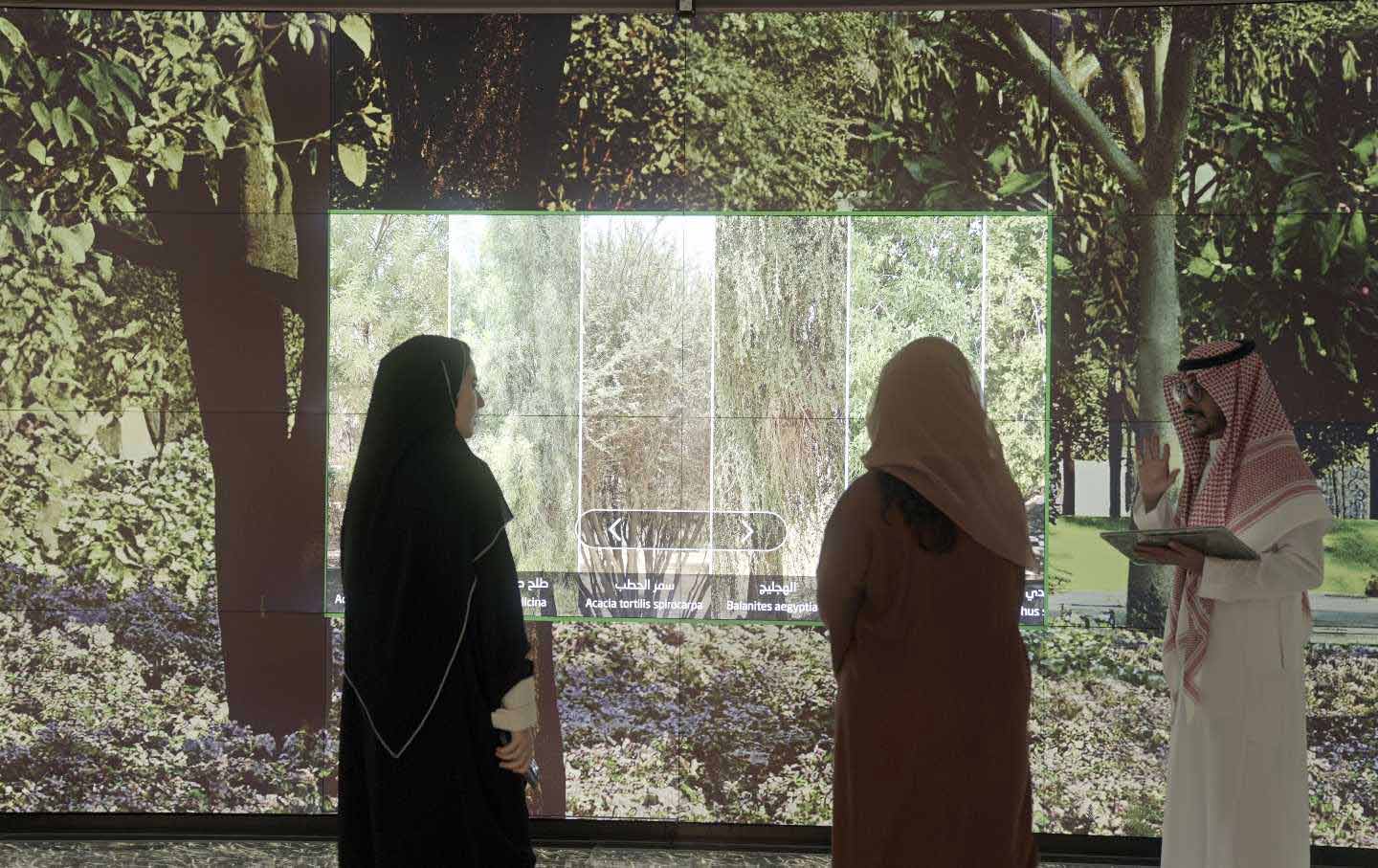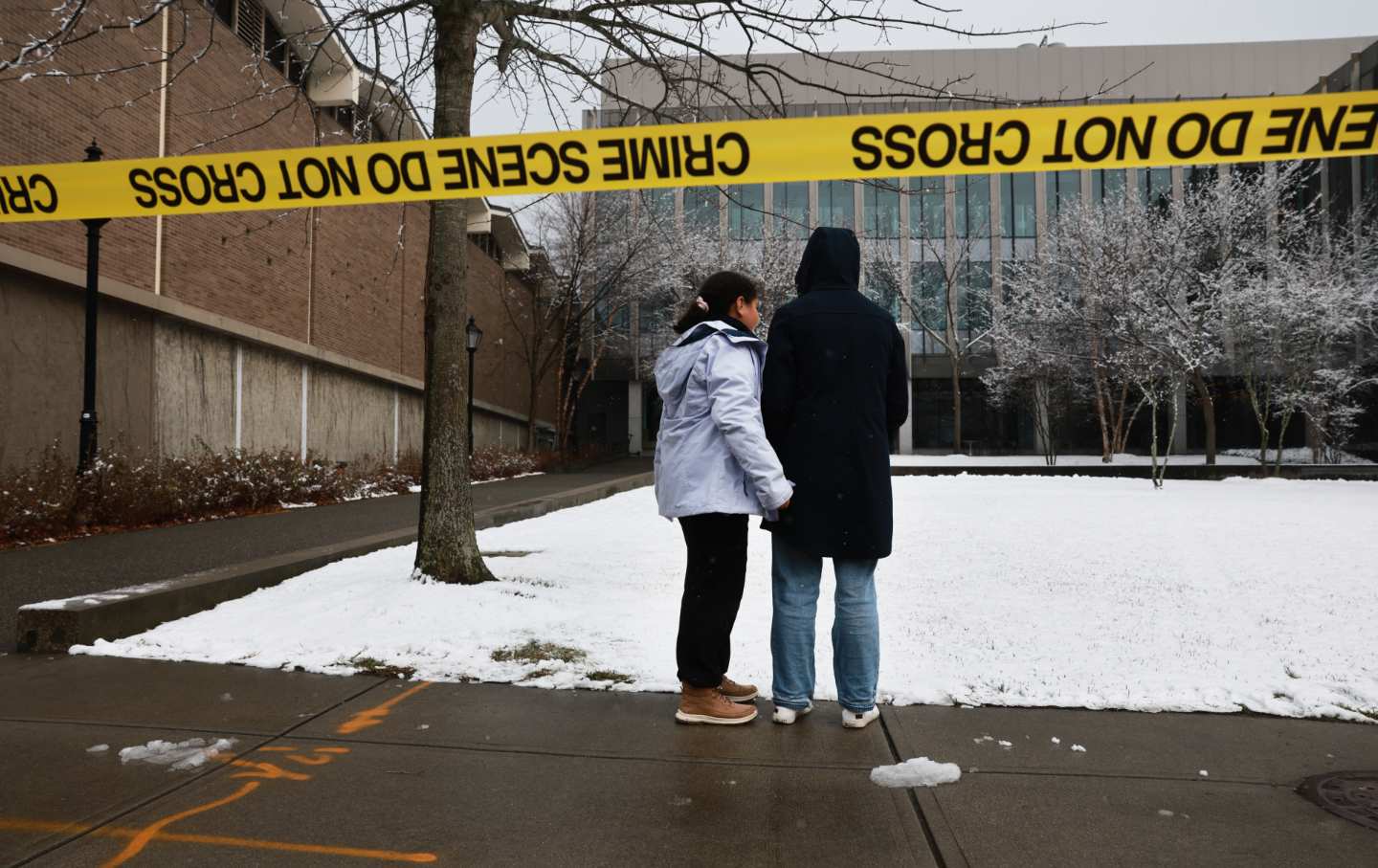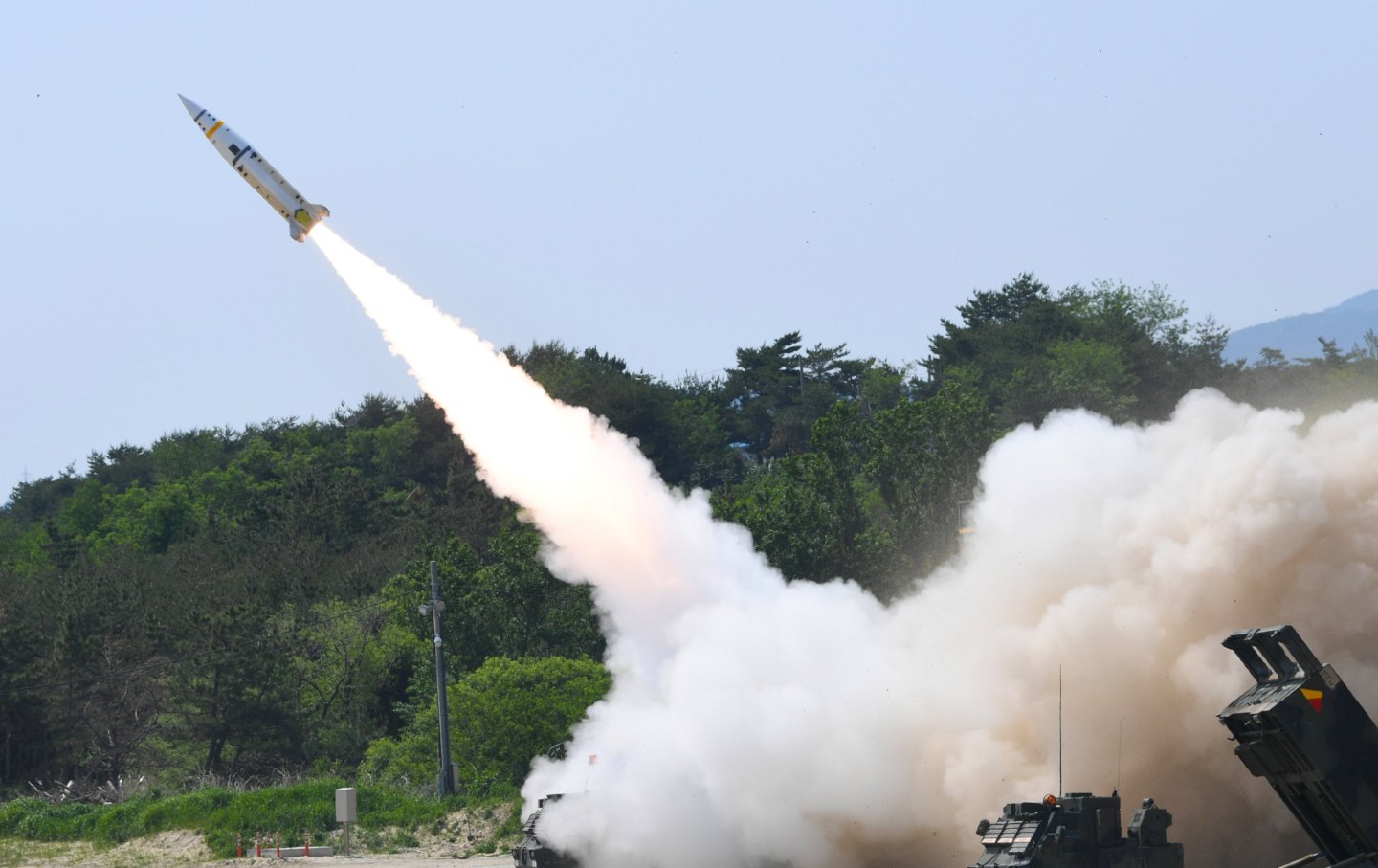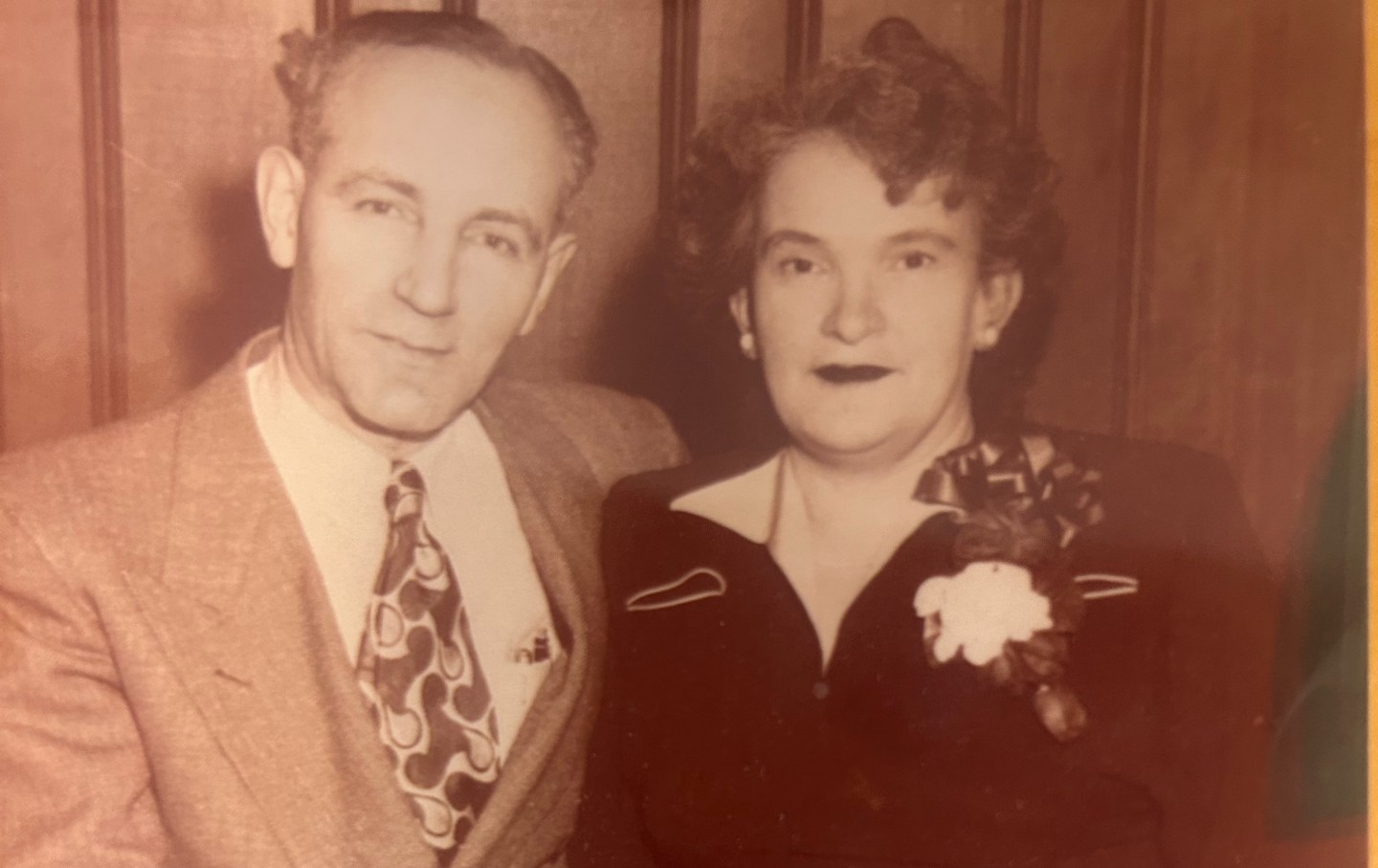Everyone Needs to Disavow Neom
Now that they know about the staggering number of deaths the Saudi megaproject has caused, architects have absolutely no more excuses.

In early November, the British television network ITV released a documentary called Kingdom Uncovered: Inside Saudi Arabia, exposing the conditions of migrant laborers as they suffer and die on the job for Saudi Vision 2030, a massive government program that includes the multibillion-dollar architectural megaproject Neom and the horizontal skyscraper—excuse me, “linear smart city”—known as The Line. According to ITV, 21,000 migrant workers from India, Bangladesh, and Nepal have died so far in the Saudi desert laying foundations for these works. The Hindustan Times estimates that another 100,000 workers have gone missing. As shocking as these numbers are, this is not the first time that Neom’s had blood on its hands. Four years ago, The Guardian reported on the forced removal, under threat of death or imprisonment, of 20,000 indigenous people from Tabuk Province, just north of the Red Sea coastline, to clear room for the project. Meanwhile, the ITV documentary paints the city-state-in-progress as a total hellscape, revealing conditions that unequivocally violate international labor standards, including 16-hour work days in relentless heat bookended by four-hour trips on- and off-site, leaving very little time for sleep or recovery. Workers have described themselves as little better than “beggars” and “trapped slaves.”
When approached, Neom representatives told the filmmakers, “We require all contractors and subcontractors to comply with Neom’s Code of Conduct, based on the laws of Saudi Arabia and the policies of the International Labour Organization, and they are subject to frequent inspections of their workers’ living and working conditions.” According to Middle East Eye, the Saudi government has yet to respond to a request for comment.
For years, the architecture world has been inundated with PR, job offers, glitzy renderings, and journalistic puff pieces related to Neom, and some of the field’s biggest, most star-studded firms have lent their credibility to this murderous fever dream that will likely never come to fruition. (The Line, which the Saudi government said would house 1.5 million people by 2030, now anticipates a mere 300,000 residents.) The list of architectural stars attached to these projects is long, and includes such luminaries as OMA, Bjarke Ingels Group, Zaha Hadid Architects, UNStudio, Gensler, Tom Wiscombe, Mark Foster Gage, Pei Cobb Freed, and HOK. To their credit, some firms have already backed away from the project, including Morphosis, Mecanoo, Coop Himmelb(l)au, and David Adjaye and Associates after earlier human rights abuses were uncovered.
Let me be unequivocally clear: Those who have not withdrawn from everything under the Saudi Vision 2030 umbrella are actively complicit in a scheme that has already resulted in mass death and displacement. Their heady visions, press releases, theoretical interventions, and architectural fees give legitimacy to an illegitimate project and are stained with the blood of some of the most vulnerable members of global society. The death and displacement tolls indicate a travesty on par with a regional war. It is not too late to refuse to lend one’s name to such a scheme. Every single one of these firms has a moral obligation to do so. The workers in those firms have the same duty to organize for change from within. It is more than fair that firms who refuse to divest from Neom be held accountable with real consequences, from loss of licensure to academic boycotts. How else can we stop such complicity? Is an ethics investigation or professional embarrassment really too high a cost?
The field of architecture had another chance to reckon with the reality of the slave and migrant labor that goes into executing such spectacular schemes 10 years ago, when Zaha Hadid Architects came under fire for the use of forced labor in building its stadium for the Qatar World Cup. Hadid herself, who died in 2017, told The Guardian at the time, “I’m not taking it lightly but I think it’s for the government to look to take care of. It’s not my duty as an architect to look at it.” Clearly, the profession has not learned any lessons from that controversy. It has instead decided to bury its head in the literal sand.
However, it is the duty of architecture, engineering, and construction firms to look closely at who exactly builds their buildings. Architects’ lives are not worth more than that of those who bring their projects to fruition. What is the purpose, exactly, of organizations like the Royal Institute of British Architects (whose incoming president, Chris Williams, is directly involved in Neom) or the American Institute of Architects if their codes of ethics and professional practice say nothing about the field’s role in propping up undemocratic regimes, abetting forced displacement, or turning a blind eye to exploitative labor practices? What clearer violation of architectural ethics can there be than those 21,000 deaths? All this, too, for a project that adds so little value to the world, a post-oil daydream of petrostate despots, a hyper-surveilled, hypercapitalist Xanadu for the ruling classes to withdraw to while the rest of the world burns.
Neom is nothing if not the logical endpoint of so much of architectural thought in our era of tech-driven spectacle. Many of our proposed “cities of the future,” from Bjarke Ingels’s floating Oceanix to The Line, are little more than libertarian schemes for the ultrarich to retreat from the warming world—all dressed, of course, in the language of ecomodernism. Even the Saudis boast that their death-city will be fully sustainable. Who, one must always inquire, will build those futures? Occupy them? Service them? But that’s the thing—no one wants to ask those questions because the answers look a lot like Neom. Once it’s past the press release stage, the language of the ostentatious city of tomorrow is written in blood.
Disobey authoritarians, support The Nation
Over the past year you’ve read Nation writers like Elie Mystal, Kaveh Akbar, John Nichols, Joan Walsh, Bryce Covert, Dave Zirin, Jeet Heer, Michael T. Klare, Katha Pollitt, Amy Littlefield, Gregg Gonsalves, and Sasha Abramsky take on the Trump family’s corruption, set the record straight about Robert F. Kennedy Jr.’s catastrophic Make America Healthy Again movement, survey the fallout and human cost of the DOGE wrecking ball, anticipate the Supreme Court’s dangerous antidemocratic rulings, and amplify successful tactics of resistance on the streets and in Congress.
We publish these stories because when members of our communities are being abducted, household debt is climbing, and AI data centers are causing water and electricity shortages, we have a duty as journalists to do all we can to inform the public.
In 2026, our aim is to do more than ever before—but we need your support to make that happen.
Through December 31, a generous donor will match all donations up to $75,000. That means that your contribution will be doubled, dollar for dollar. If we hit the full match, we’ll be starting 2026 with $150,000 to invest in the stories that impact real people’s lives—the kinds of stories that billionaire-owned, corporate-backed outlets aren’t covering.
With your support, our team will publish major stories that the president and his allies won’t want you to read. We’ll cover the emerging military-tech industrial complex and matters of war, peace, and surveillance, as well as the affordability crisis, hunger, housing, healthcare, the environment, attacks on reproductive rights, and much more. At the same time, we’ll imagine alternatives to Trumpian rule and uplift efforts to create a better world, here and now.
While your gift has twice the impact, I’m asking you to support The Nation with a donation today. You’ll empower the journalists, editors, and fact-checkers best equipped to hold this authoritarian administration to account.
I hope you won’t miss this moment—donate to The Nation today.
Onward,
Katrina vanden Heuvel
Editor and publisher, The Nation








